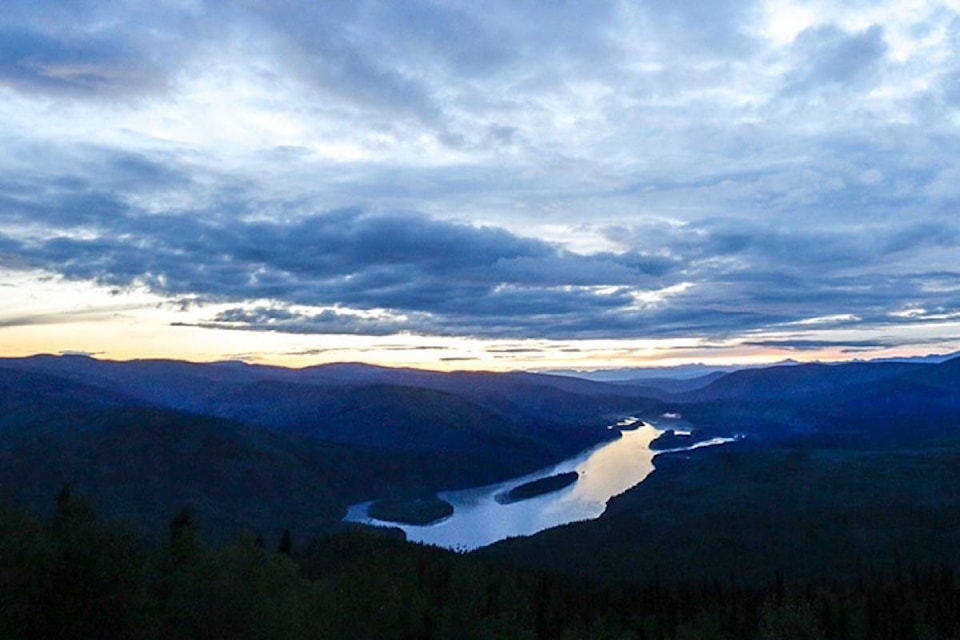I met Susan Wolf because of microgreens and my dog’s utter disregard for personal space.
Sitting on the patio of the Alchemy Cafe, I had been taking a brief rest (and a fabulous americano) between tightly scheduled interviews. I had run across a friend who was living on a farm in West Dawson, and we chatted about greenhouses and honey bees and cheesemaking. It was uncharacteristically hot, and my dog lay wedged behind my chair in a thin strip of shade, panting, leaving little drips of drool on the patio which quickly evaporated in the heat.
Wolf came over, sat down at the adjacent table and she scraped her chair across the wood, which made my dog sit up. Seeing a break in my own conversation, Wolf politely leaned over and inquired, “Excuse me, I heard you talking about local greens. Could you talk to me about local greens?”
At which point my dog sauntered up from under the table and draped his giant, drooling head across Wolf’s lap. Voila: instantaneous rapport.
Wolf is a short, sprite-like young woman with a shock of paige-cut brown hair and a sensitive, watchful face. Originally from Halifax, she is a recent immigrant to that gritty and luminous city of Canadian arts and culture, Toronto. She is currently on loan to the Yukon via the Klondike Institute of Arts and Culture artist in residence program. Originally an animator and filmmaker, Wolf is in Dawson to embark into some new — and usual — territory: science-based dance choreography.
Using a hydrophone (a fancy microphone designed to record sounds under water), Wolf will be making recordings of the otherwise unheard music of the Yukon and Klondike rivers. The collected sounds are being sent back to her friend and collaborator, David Barclay, a professor of oceanography at Dalhousie University in Halifax. Barclay will then lay out the data in a series of mathematical charts, which Wolf will then in turn use as a guide or “map” to create a choreography score.
It was the physical similarity between these types of artistic scores and the way oceanographic sound data is plotted that spawned the idea for the project, Wolf said. She was just hanging out in Barclay’s lab one afternoon when she became intrigued by one of his sets of data, and the idea to apply it to dance occurred to her.
“In writing a music score, you have notes,” she said. “In a choreographic score, you have the same idea, but related to movement, space and time.”
To those uninitiated into the world of performance art, this might seem a tad eccentric. After all, what does the sound of a river have to do with the body of a dancer?
The charted sounds, as well as GPS data, weather and other obscure data will allow her to, “create a palette of gestures and a language of movement related to the data Dave (Barclay) gives me,” she said.
Wolf said she is “new to dance but not new to being an artist.”
“I’m interested in different structures,” she said. “In connecting movement to the outside world.”
More than just a thoughtful, quirky way of creating dance and movement, it’s also a collaboration. Barclay’s specialty might be oceans, but he is interested in learning more about the way rivers work, and about the Klondike River specifically. When all the data is collected, he hopes to publish an academic paper, meaning the project will eventually fuse science, academia and performance art.
“Through David, there is this access to something that’s both physical and present, which I wouldn’t have access to on my own,” she said. The same goes for David (Barclay). There’s a means to interpretation here that otherwise wouldn’t be available to us.”
Once the data is collected and analyzed by Barclay, Wolf said she isn’t quite certain what form it would take. It might be a performance for which she hires professional dancers from Toronto and brings back to show in the Yukon, or it might be something she returns to put together with amateur dancers from the community.
“It might even be a parade,” she said, with a laugh. “It’s really fun to be up here and do this crazy wonky thing.”
“The goal of what I do is not entertainment…. With dance, as it uses the body, there is the possibility of people connecting and of being moved in ways they wouldn’t have otherwise been.”
There is a catch though: in order for the project to work, Wolf has to be able to get out on the water as much as possible, she said. She can’t use the ferry, because whatever vessel she is in needs to be in moored for up to ten or fifteen minutes, with the engine off, so that the sound doesn’t distort the data collected by the hydrophone. A canoe would be ideal for this, and Wolf is looking for volunteers to take her out on the water.
“I haven’t actually been out on the water yet,” she said, with a sheepish grin.
If you think you would like to help Wolf out and be part of this project by offering your services as a boater or canoeist, Wolf invites you to contact her through KIAC.
“This is a project with many phases,” she said. “But most of all, it’s fun. That’s what’s most important.”
Contact Lori Garrison at lori.garrison@yukon-news.com
